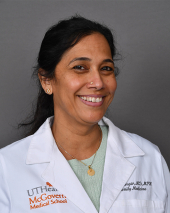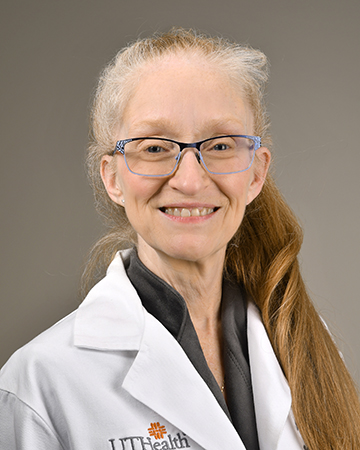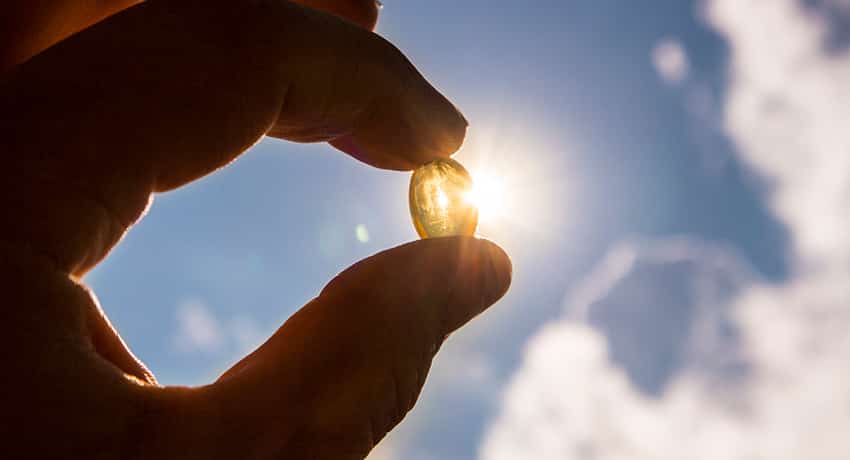It’s no secret that vitamin D is critical to balancing many areas of health. But from pediatric broken bones to cluster headaches, physicians and scientists at The University of Texas Health Science Center at Houston (UTHealth Houston) are still learning just how potent the so-called “sunshine vitamin” is.
Vitamin D deficiency is already widespread, affecting approximately 42% of the U.S. population, according to research published in the National Institutes of Health database. Because of this, some researchers across the globe have referred to vitamin D deficiency as an “invisible epidemic.”
Doctors ranging from orthopedic surgeons to family medicine practitioners see an uptick in patients with vitamin D deficiency. More testing, people staying indoors because of skin cancer risk, or more recently, safety precautions during the COVID-19 pandemic, have been factors in the increase.

“The reason why we’re seeing an upward trend is because we’re checking for it,” said family physician Deepa A. Iyengar, MD, professor of family and community medicine and the Stanley G. Schultz, MD, Endowed Professor in Global Health with McGovern Medical School at UTHealth Houston. “Identifying vitamin D deficiency is such an important part of the family medicine genre because deficiency is seen across all ages.” Iyengar sees patients at UT Physicians, the clinical practice of McGovern Medical School.
Although most people have no symptoms, severe cases of vitamin D deficiency can lead to thin, brittle, or misshapen bones. Fortunately, the deficit is treatable, with doctors often prescribing over-the-counter vitamin D supplementation.
How vitamin D affects the body
Vitamin D is best known for promoting healthy bones and teeth. The human body can only absorb calcium, the primary component of bone, when vitamin D is present.
Accordingly, there is a well-documented relationship between vitamin D and orthopedic health, said pediatric orthopedic surgeon Alfred A. Mansour III, MD, clinical associate professor of orthopedic surgery with McGovern Medical School. His team at UT Physicians recently conducted a quality improvement project examining the link between low vitamin D levels and broken bones among pediatric patients sent to the emergency room at Children’s Memorial Hermann Hospital.

“Everyone notices a fracture or a broken arm, but now we’re looking deeper and uncovering the ‘why’ behind it. Why did this kid break their arm compared to these thousands of other kids who also fell? Why did this kid get a stress fracture in their foot?” Mansour said. “I’ve had many patients who have struggled to improve from these injuries, and our group has found that vitamin D deficiency played a role in that.”
Of the pediatric patients studied by Mansour’s group who needed surgical treatment for their fracture or broken bone, 85% were vitamin D deficient. The discovery has led his team to implement new protocols, including partnering with the pediatric emergency room at Children’s Memorial Hermann Hospital to test for the condition in admitted patients.
As noted by Iyengar, a person can experience vitamin D deficiency at any age, from birth to later in life. However, some factors put certain individuals at greater risk than others.
Infants who are being breastfed are among the high-risk groups, according to UT Physicians pediatrician Kenya M. Parks, MD, clinical associate professor of pediatrics with McGovern Medical School.
“We want to promote breastfeeding, and breast milk is the best milk for babies, but it is very low in vitamin D,” Parks said. “Breastfeeding moms will want to make sure their infants get supplementation early on.”

The American Academy of Pediatrics recommends breastfed and partially breastfed infants be supplemented with 400 international units (IU) of vitamin D per day, beginning in the first few days of life. Some doctors advise breastfeeding mothers to purchase vitamin D drops, which are available at nearly any pharmacy or grocery store and should be given to breastfed babies daily. Babies can also get vitamin D through 10 to 15 minutes of sunlight exposure each day.
Parks said other patients who are vitamin D deficient include children and teens who are obese — a phenomenon at least partially attributed to distribution into a greater amount of body tissue — and children and teens who are on certain anticonvulsant and anti-fungal medications, which interfere with their body’s ability to absorb or convert vitamin D.
In children, extreme cases of vitamin D deficiency manifests as rickets — a disease that results in soft bones and skeletal deformities. Rickets can also cause developmental delays, seizures, muscle spasms, and other abnormalities, Parks said.
“Vitamin D is both a vitamin and a hormone,” Parks said. “Kids have growing bones, so if they don’t get enough vitamin D, their bones aren’t fortified.”
Vitamin D deficiency is also high among Black individuals, whose darker skin has more melanin than lighter-skinned individuals. This reduces their ability to synthesize vitamin D from the sun and results in lower vitamin D levels.
The deficiency is highest among people who are elderly, institutionalized, or hospitalized. In the U.S., according to a study published in Pharmacotherapy, 60% of nursing home residents were low in vitamin D. According to research published in The New England Journal of Medicine, 57% of hospitalized patients were found to be vitamin D deficient.
“As you get older, bone resorption increases and bone formation decreases, so if you don’t substitute that loss with enough calcium, it causes a bone mass deficiency,” said Iyengar, who sees geriatric patients at UT Physicians. “Your body thinks you’re short of vitamin D, so it takes that vitamin from the bone and gives it to the blood, which puts people at major risk for osteoporosis.”
Vitamin D production in the skin from sunlight exposure also declines with advancing age, making elderly populations more dependent on dietary supplements. Additionally, because vitamin D deficiency is also linked to parathyroid metabolism, women become especially prone as they go through menopause and lose estrogen, Iyengar said.

A woman’s ability to build bone peaks in her mid to late 20s, according to Pamela D. Berens, MD, the Dr. John T. Armstrong Professor in Obstetrics and Gynecology with McGovern Medical School and an OB/GYN with UT Physicians. Therefore, as women enter their 30s, Berens advises her patients to work on maintaining their bone health.
“For postmenopausal women, it’s really important to know your bone density and vitamin D level. Having that knowledge gives you the power to fix it,” Berens said. “Younger women just need to think about what they can do to build healthy bones.”
Vitamin D also regulates many other cellular functions. Its anti-inflammatory, antioxidant and neuroprotective properties support immune health, muscle function, and brain cell activity.
Mark J. Burish, MD, PhD, assistant professor in the Vivian L. Smith Department of Neurology with McGovern Medical School and a neurologist and headache management specialist with UTHealth Neurosciences, has begun enrolling patients in a clinical trial to determine whether a multivitamin combined with high doses of vitamin D3 supplements — similar to those prescribed to patients with multiple sclerosis and other diseases — could potentially serve as an effective treatment for excruciating cluster headaches.

Burish theorizes a few possible reasons why increased vitamin D intake might be able to treat cluster headaches. One reason is that vitamin D appears to block a critical pain-signaling molecule commonly activated during cluster headaches. Another theory is that the headaches might be linked to circadian rhythms. This natural, internal process regulates the sleep-wake cycle and repeats roughly every 24 hours.
“Normally, people receive vitamin D through direct sunlight, and the most common time for a cluster headache attack, no matter where you live, is 2 a.m., when it’s still very dark outside,” Burish said. “Vitamin D may be able to help regulate the light-dark pattern that seems to be tied to these headaches.”
How to get enough of it
A person can get vitamin D in three ways: through the skin, diet, and medically prescribed supplements.
Some time in the sun is recommended. But, too much sun exposure can lead to skin cancer. Food may be a better source. A few foods — including fatty fish, beef liver, cheese, mushrooms, and egg yolks — naturally carry the nutrient. It can also be found in fortified foods and beverages, such as milk, breakfast cereals, orange juice, yogurt, and soy drinks.
People also get vitamin D from multivitamins and supplements, which come in both pill and liquid form for infants.
According to the National Institutes of Health, the daily recommended amount of vitamin D is 400 IU for infants up to 12 months old, 600 IU for children and adults up to 70 years old as well as breastfeeding women, and 800 IU for adults who are at least 71 years old.
The standard treatment for vitamin D deficiency involves supplements. Depending on an individual’s condition, their health care provider will recommend how much they need to take, how often they need to take it, and how long they need to take it.



